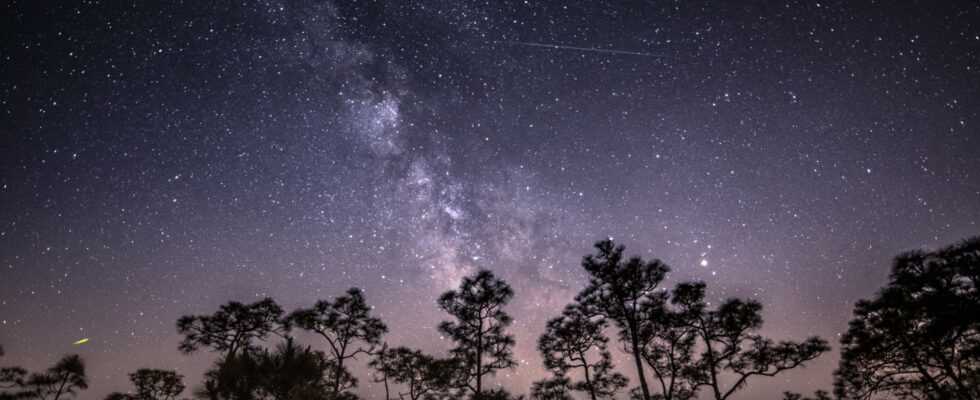The Eta Aquarids pass through the sky every year in the spring. In 2022, the peak of activity of the swarm of shooting stars is announced on May 6. Where do these meteors come from? And how to admire them?
A new swarm of shooting stars is to be admired in the sky this month of May 2022, in addition to other astronomical shows, and after the Lyrids in April. It is the returning Eta aquarids that should be possible to observe.
How to see Eta Aquarids? What will happen in the sky? Here’s everything you need to know to watch these meteors, weather permitting.
How to observe Eta Aquarids?
The peak of activity of the Eta aquarids is generally located around the May 6. Each year, this meteor shower is usually visible between April 19 and May 28. Nevertheless, it should be kept in mind that the date of the maximum of the swarm is mainly indicative. ” It is quite tricky to predict the peak with high accuracy “, explains to Numerama Sébastien Derriere, astronomer at the Strasbourg Observatory. The spectacle is variable from one year to another, knowing that it depends on several elements (among others, the date of the last visit of the comet, changes in the orbital parameters of the comet).
As usual with shooting stars, it is best to avoid bright places for observation. Be patient to hope to see the Aquarid Eta. The location of this swarm gives the impression that it is emerging from the constellation Aquarius. How to find it? One trick is to look for the Grand Square of Pegasus, a square formed by four very bright stars. Its shape makes it easy to distinguish.
In the constellation of Aquarius, you can try to look for the star Eta Aquarii. It gave its name to the Eta Aquarids because their radiant (the place from which shooting stars seem to arise in the sky) is close to this star.
The swarm is not known for intensity: NASA indicates that we can expect to see between 10 and 20 meteors at the time of the peak of activity. It is possible to lie down to look at the Eta aquarids, located rather high in the sky. No telescope is necessary for their observation.
Where do these shooting stars come from?
The swarm comes from Comet Halley (officially designated 1P/Halley), identified in 1705 by British astronomer Edmond Halley. It takes 76 years for this very dark comet to make a complete revolution around the Sun. It moves away to the orbit of Neptune.
It is the cloud of dust left by this comet, which hits the Earth’s atmosphere, that can be seen in the sky in the form of shooting stars. ” It’s an old swarmexplains Florent Deleflie, astronomer at the Paris Observatory. The older the passage of comets, the more difficult it is to define the intensity of the swarm. This intensity decreases over the years.. »
1P/Halley is a short-period comet, the first member of the Halley comet family — which includes comets whose period of revolution is between 20 and 200 years. The last time observers were able to see the comet was in 1986. It will not return to the solar system until 2061.
Halley’s comet was studied during a mission of the European Space Agency, using the Giotto probe launched in 1985. The flyby of the celestial object made it possible to learn that it was a remnant of the solar system, billions of years old. From ” complex molecules enclosed in Halley ices were detected, according to the ESA: these elements could potentially help to better understand the chemistry of life on Earth.
Eta Aquarids are known for their speed and move at a speed of 66 kilometers per second. If you attempt a viewing session by the end of May, you can start by letting your eyes adjust to the dark for about half an hour. You can then fully enjoy the show. Good observation of the sky!
